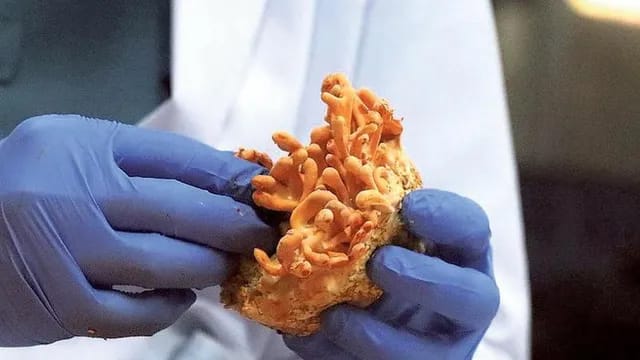
According to an Indian Express report published on Wednesday, Goan researchers discovered the sources of gold nanoparticles synthesized from a wild kind of fungus frequently consumed by natives in the region. To create gold nanoparticles, the two researchers researched Termitomyces mushrooms, often known as ‘roen olmi’. The study demonstrates the successful development of a certain mushroom species into a pure three-dimensional pelletized form suitable for the manufacture of gold nanoparticles. The study, titled ‘Biosynthesis and Characterisation of AuNPs generated utilizing Termitomyces heimii Pellets,’ was just published in Taylor & Francis’ Geomicrobiology Journal.
Gold nanoparticles hold significant potential in global markets
On Tuesday, Dr. Sujata Dabolkar and Dr Nandkumar Kamat presented their findings to Aleixo Sequeira, Goa’s Environment Minister and chairman of the Goa State Biodiversity Board (GSBB). They also presented a tentative roadmap to the Goa government, emphasizing the significant economic and bioindustrial implications of this discovery for Goa. Dr. Kamat, who has been studying this mushroom variation for over three decades, stated that Goa has the highest species diversity and gene pool of wild edible Termitomyces mushrooms. He remarked, “For the first time, this type of mushroom has been introduced into pure culture, cultivated as pellets, and used to manufacture gold nanoparticles. “The breakthrough pioneers the use of an environmentally friendly species for mass production of gold nanoparticles.”
Golden nanoparticles hold significant potential in global markets. Dr Dabolkar noted, “In February 2016, a single milligram of gold nanoparticles cost around $80, which equates to 80,000 dollars per gram.” The researchers emphasised the importance of conserving and responsibly utilizing these resources, in accordance with the Nagoya Protocol, to benefit both industries and local communities.